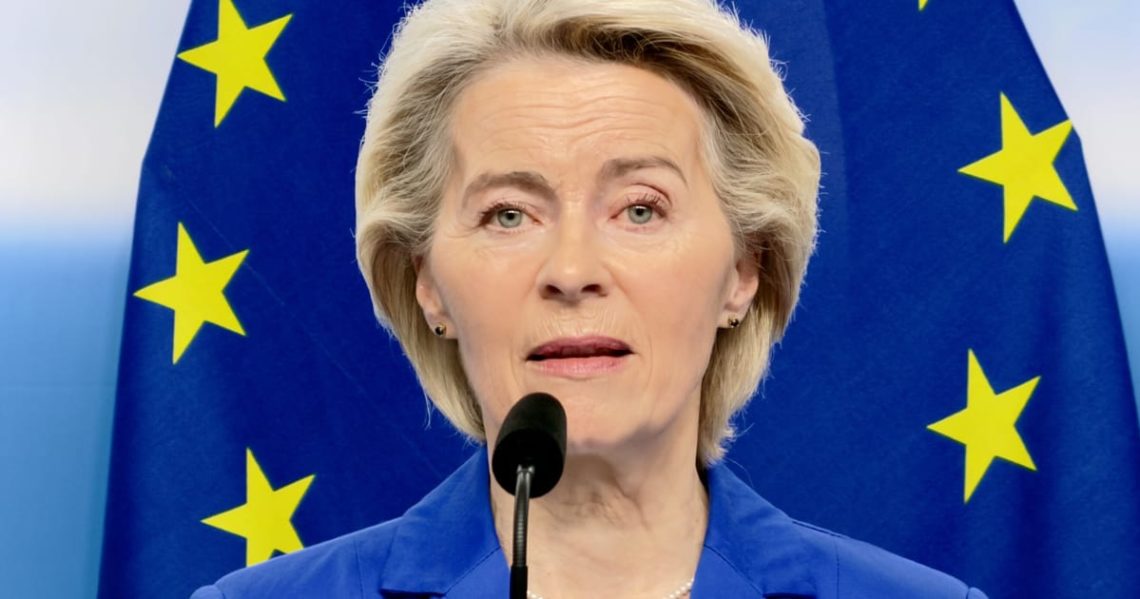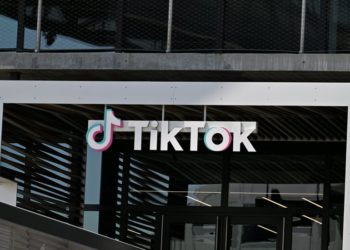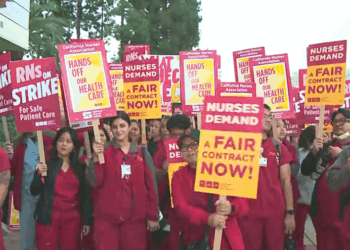BRUSSELS — In the midst of a geopolitical storm, Brussels is racing to put together a new plan by the end of this year to diversify European supply of so-called critical raw materials — such as lithium and copper — away from China.
The thing is: We’ve been here before. So far, the European Commission has provided few details on its new plan, beyond that it would touch upon joint purchasing, stockpiling, recycling of resources and new partnerships. It already addressed those measures two years ago in its first initiative on the issue, the Critical Raw Materials Act.
Commission chief Ursula von der Leyen has been forced to act by Beijing’s expansion and tightening of export controls on rare earths and other critical minerals this month, as trade tensions with Washington escalated. Europe was caught in the crossfire — China accounts for 99 percent of the EU’s supply of the 17 rare earths, and 98 percent of its rare earth permanent magnets.
The new “RESourceEU” plan is expected to follow a similar model to the REPowerEU plan, under which the Commission in 2022 proposed investing €225 billion to diversify energy supply routes after Russia’s illegal invasion of Ukraine.
That has European industry daring to hope that Brussels will do more than just recycle an old initiative and address the main obstacles to diversifying the bloc’s supply chains of minerals it needs for everything from renewable energy to defense applications. The biggest of them all? A lack of cash to back new mining, processing and manufacturing initiatives, both within and outside the EU.
“It’s all still very much in its infancy,” said Florian Anderhuber, deputy director general of lobby group Euromines.
“We hope that there will be a bigger push that goes beyond the implementation of the Critical Raw Materials Act,” he added. “It doesn’t help anyone if this is just a label for things that are already in the pipeline.”
Codependent relationship
The EU should not count on any trade reprieve that may result from U.S. President Donald Trump’s meeting with Chinese counterpart Xi Jinping on Thursday. After all, Beijing has shown time and again that it has no reservations about weaponizing economic dependencies.
The key question is whether, this time around, pressure will remain high enough for the EU to mobilize brainpower and assets at the kind of scale it did when it sought to break the bloc’s decades-old reliance on Russian oil and gas.
“Europe cannot do things the same way anymore,” von der Leyen said as she announced the initiative last weekend.
“We learned this lesson painfully with energy; we will not repeat it with critical materials. So it is time to speed up and take the action that is needed.”
In the here and now, the EU wants to persuade a visiting Chinese delegation at talks in Brussels on Friday to speed up export approvals for its top raw materials importers. In parallel, energy and environment ministers from the G7 group of industrialized nations are slated to wargame how to de-risk their mineral supply chains in Toronto, Canada, on Thursday and Friday.
Money, money, money
When the Commission unveiled its first grand plan to break over-reliance on China in 2023 — the Critical Raw Materials Act (CRMA) — industry leaders and analysts mostly lamented one thing: a lack of funding on the table.
“Money has been a real bottleneck for Europe’s raw materials agenda,” said Tobias Gehrke, a senior policy fellow at the European Council on Foreign Relations. “Mining, processing, recycling, and stockpiling all need serious financing.”
If the EU fails to free up more resources, experts warn that it is bound to fall short of the goal set in the CRMA, of extracting at least 10 percent of its annual consumption of select minerals by the end of the decade, with no more than 65 percent of some raw materials coming from a single country.
It’s a steep target — especially for rare earths, where Beijing has over decades built up a de facto monopoly. While the EU executive has selected strategic projects both within and outside the EU that should benefit from faster permitting than their usual lead times of 10 to 15 years to production, those efforts are yet to bear fruit.
“To finance such projects, the next EU budget must provide substantial, dedicated [Critical Raw Material] funding, and financial institutions must deploy innovative de-risking and financing tools,” the European Initiative for Energy Security argues in a new report, calling for a “permanent European Minerals Investment Network.”
The REPowerEU plan — a package of documents, including legal acts, recommendations, guidelines and strategies — was mostly financed by loans left over from the bloc’s pandemic recovery program.
Similarly, RESourceEU must become “resource strategy backed by real funding,” said Hildegard Bentele, a member of the European Parliament who’s been working on critical minerals for years.
“This requires a European Raw Materials Fund, modelled on successful instruments in several Member States, to support strategic projects across the entire value chain, from extraction to recycling,” the German Christian Democrat said.
That’ll cost you
It’s about more than just throwing money at the problem: The Commission’s haste in rolling out its plan is raising doubts that it will meet the needs of a highly complex market — along with concerns that environmental safeguards will be neglected.
“As long as European industries can buy cheaper materials from China, other producers do not stand a chance,” warned Gehrke.
In Toronto, G7 ministers will launch a new Critical Minerals Production Alliance (CMPA), a Canadian-led initiative that seeks to secure “transparent, democratic, and environmentally responsible critical minerals,” and also to counter market manipulation of supply chains, said a senior Canadian government official.
This would suggest creating so-called standards-based markets that are ring-fenced to protect critical minerals produced responsibly, to agreed environmental and social standards. A price floor would be set within that market, while minerals produced elsewhere — at lower prices but also lower standards — would face a tariff.
Beyond the immediate funding issues, ramping up mining in the EU and its neighbourhood also comes at a high societal cost. With local resistance to new mines, usually linked to environmental and social concerns, being one of the key obstacles to new projects, investors are often hesitant to pour money into a project that risks being derailed shortly after.
“The EU is choosing geopolitical expediency over human rights and ecological integrity, sacrificing frontline communities for a strategy that is neither sustainable nor just, instead of building a durable and values-based autonomy that invests in systemic circularity and rights-based partnerships,” said Diego Marin, a senior policy officer for raw materials and resource justice at the European Environmental Bureau, an NGO.
Jakob Weizman and Camille Gijs contributed reporting from Brussels. Zi-Ann Lum contributed reporting from Toronto, Canada.
The post The EU wants to escape China’s grip on critical minerals. Can it afford to? appeared first on Politico.




